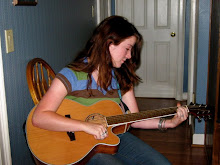Ambiguity is more than just a style for Shaw, it is essential to his very person. He was "one of the most celebrated and controversial writers of the twentieth century." (1002) Shaw did not want to advocate simple solutions to social problems or a definitive morality. Ambiguity is the vital theme to modernist work. Modernism encourages one to translate "right" and "wrong" according to self, and not by over-arching meta narratives. Shaw encouraged self-education, seeking out the "truth" outside of established realms. He thought that school was designed "to keep little devils locked up where they cannot drive their mothers mad." (1002) Shockingly, I believe Shaw has a point. For one, I am an education major and have encountered some children that I pity their mothers. Secondly, I find that school often confines students learning to standards and no creative or personal thought is encouraged. Students get trapped into fill in the blank book work instead of seeking out wisdom and knowledge through individualized thought. I do not think education should be written off like Shaw seems to think, but I think more balance needs to ensue.
A distinguishing factor of Shaw's work is that "there are no outright villains, and no pure heroes or heroines." (1003) Shaw despised ruthless capitalism, but his capitalist characters were still like able and intelligent in other realms. This balance allows the reader to decide their perception of each character. The author does not try to sway the reader to like or dislike any particular character.
Pygmalion presents characters that are endearing at moments and infuriating at others. Most would expect the socially high classes to behave with manners and courtesy befitting them, but this play opens with characters that are lacking. One pities Freddy as he is showered with complaints from the mother and her daughter. In his attempts to be courteous to them, he bumps into a rather disheveled character. The flower girl, Eliza Doolittle, is hardly appealing on the outside. She is a street urchin with terrible speech patterns and a manipulative whine. At moments, I find myself annoyed with her badgering every person to try to get ahead. When I recall the desperation of her situation, my heart softens and realizes that she was probably raised with this mentality. Children are often products of environment. She may try to get money out of the mother, but she is grateful. The mother may have complained, but she was still generous. The daughter, Clara, lacks a whole lot of redeeming value in my opinion. She seems high maintenance and irritable. My favorite character has to be Higgins. He is brutally honest, sarcastic, and nosy, but he does care about the improvement of Eliza's state. He felt certain that he could turn her from a draggletailed guttersnipe to a duchess. (1019). Shaw does an excellent job representing the characters in an undecided manner. Sometimes ambiguity is the answer.
Subscribe to:
Post Comments (Atom)

2 comments:
Meredith,
You present an insightful and even-handed view of the characters in Shaw's Pygmalion, with good attention to the playwright's exploration of the ambiguity of his characters. I also was amused by your take on Shaw's view of education!
I appreciate the time you take to make your posts clear, interesting and personal.
I do find it funny that the higher class people can be worse in the public eye than how the lower have to act. the upper class has almost no punishment for acting out and being rude.
Post a Comment